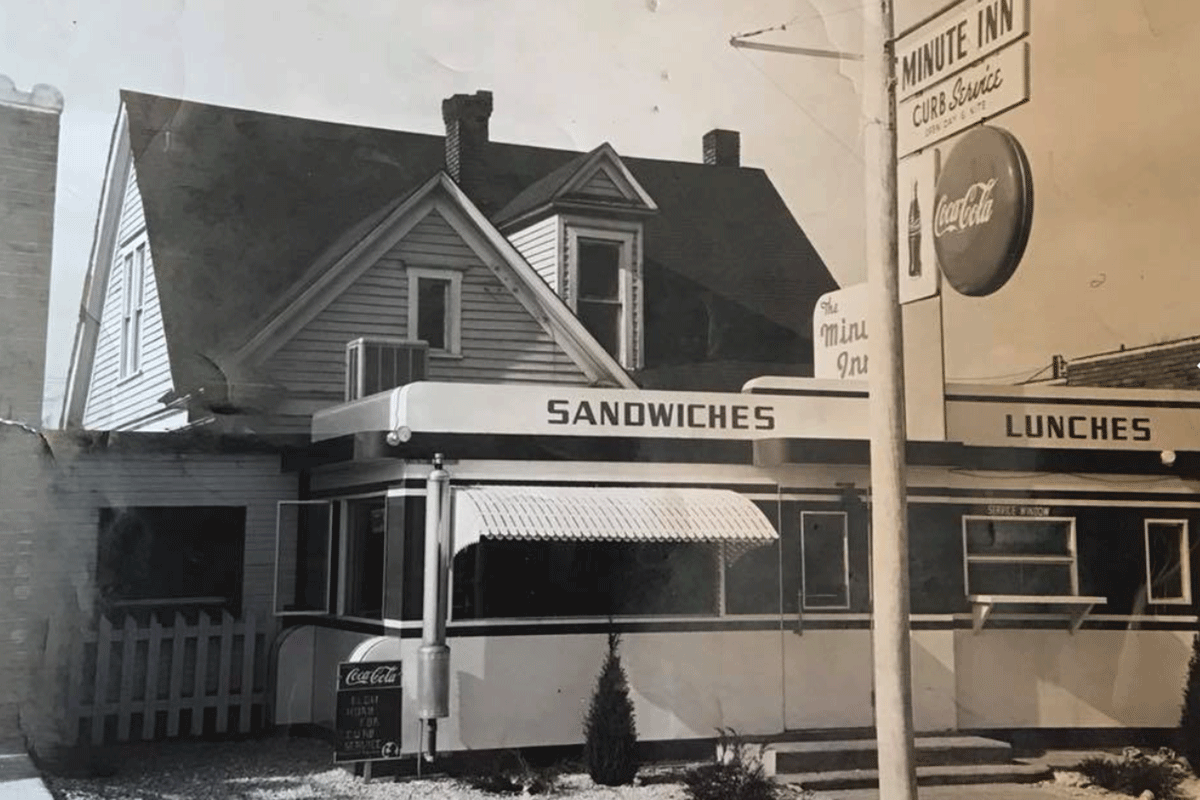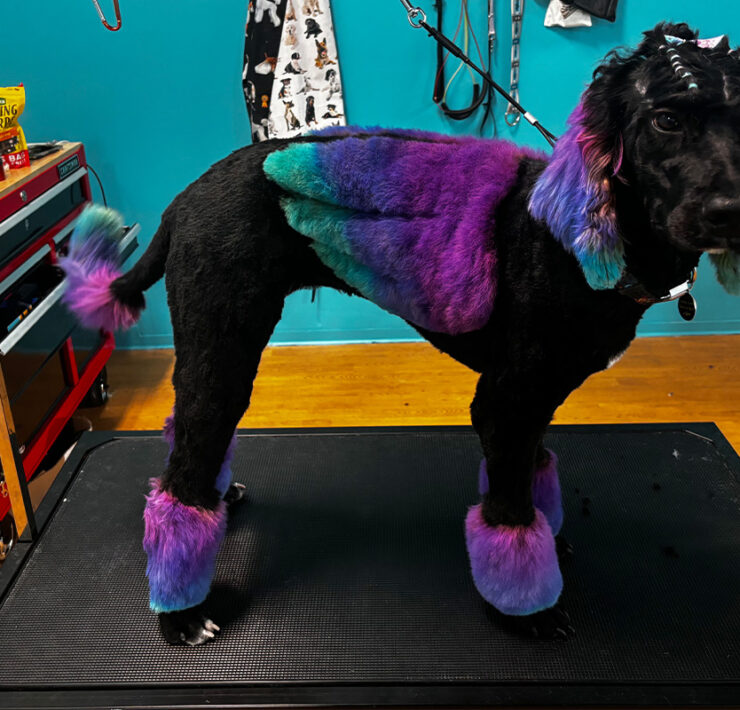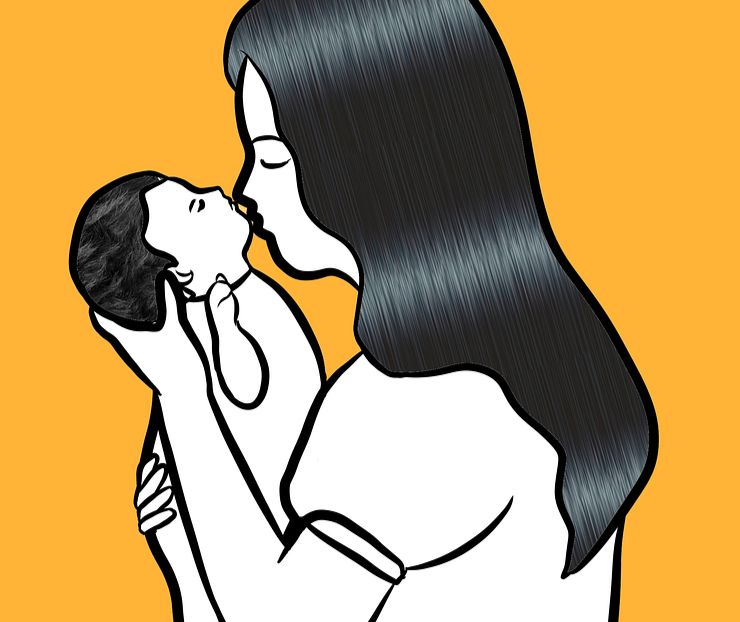Mizzou Memory Lane Through the ’60s

Remembering the dives, bars, and roadhouses of Columbia through fuzzy lenses
Columbia, the University of Missouri campus, faces and names of the past, and places that are now only snapshots in memories. It was the 1960s and Mizzou chem/engineering student Steve Mosier was soaking it all in — even after the coeds were in by their 10:30 p.m. curfew.
The names include Mort Walker and Beetle Bailey and Ike and Tina Turner. Elvis was crooning about a hound dog.
The hangouts — some more popular than others and all, probably, with stories still to be told — included The Shack, The Heidelberg, The Black Knight, The Coronado Club, Drew Drop Inn, and the Falcon Athletic Club.
Those are just a few of the featured spots in this timeless collection of memories from Steve Mosier, Mizzou SAE, Class of ’61.
This is the conclusion of our three-part series.
Read Part 1 here and read Part 2 here.
The Dew Drop Inn was one of the few after-hours dive bars I knew of in Columbia. With one exception: The Falcon Athletic Club. Now in a review of the dives and bars of Columbia I have picked the brains of old friends; yes, they are all old and they are both boys and girls from Columbia vintage the ‘60s.
I have done some research on Google, Columbia newspapers, and Mizzou sources. My shuffling through some paper documents and internet sources has not found information on the Falcon, so what I am relating is based on two sources — my own experience and that of another unnamed like-minded individual, so here’s the mining of two suspect memories.
I don’t remember who or how I found out about the Falcon, but it was around my junior year when I heard of an after-hours place that had good music, real booze, and was off the grid. I was taken on a trip one evening after hours — read that as “the girls were all home,” or somewhere out of circulation. We headed to a neighborhood I wasn’t familiar with. There was a parking lot, with several cars, suggesting the place was open for business
We proceeded to a basement entrance where our IDs were checked and thanks to my escort’s vouching, we were allowed in. There was a fully stocked bar, tables, chairs, and some booths surrounding a small dance floor and a bandstand. The bandstand was empty, but the basic tools were there — drum set, guitar, sax or two on stands, and some horns. We went to the bar and asked for some Jack and water, please. (We were served glasses, ice, and a nice pour.)
I noticed the several bottles behind the bar all had names inscribed. I learned the “business model” for the Falcon was based on the premise each bottle was not owned by the club, but by individuals (aka members) whose names were on the label. Becoming a member meant your dues contributed to the stockage of the bar, the cover of private ownership in the club, and the consumption of your choice of alcohol. No beer, no wine; just bourbon, vodka, and gin. No scotch that I recall. We had not arrived, and neither had the members.
I was offered membership and gratefully accepted, having a fresh bottle placed on the shelf with my name added to the providence. Looking around the clientele was a mix of white and blacks, probably in a ratio of 3:7. Soon a small group of musicians took the stage and played a blend of Muddy Waters and maybe Herbie Hancock. It was not what we were used to in the dives and clubs of Columbia. I was not a knowledgeable fan, but I enjoyed the sound. We stayed late — much later than we’d be outside a private club.
The Falcon Athletic Club was a new experience. In a drawer somewhere I have my membership card. Racial mingling, a variety of ages, tilted to those in their forties and above was different. A new experience. By the way, I believe there was a semi-pro football team known as the Falcons. It must have existed; otherwise, why would it be called an athletic club?
Later, after a football game, I took my dad to the Falcon, and he had a Jack and water out of “my” bottle. He’d lived in Kansas City in the early ‘40s. He said it reminded him of some places he’d been with this music and vibe. Kansas City was, after all, the home to the birth of the blues.
As an aside, the Falcon reminded me of a very nice club I happened to in the Spanish city of Zaragoza when I was in the Air Force. It was the Club del Oro, the Golden Club, and specialized in good brandy and Cuban cigars — both offered on trays for your selection. Much like an English Club, it was sedate and quiet. A small circle of friends kept this find to ourselves. We appreciated the decorum and had no desire to change a great experience by introducing some of our rowdier squadron mates.
Everything changes, and as noted earlier, Columbia went wet in the spring of ‘65, as I recall. This was a near-seismic change. First, places like the Daniel Boone Hotel and the Holliday Inn opened bars where Manhattans, G&T, and margaritas began to replace Bud and Falstaff. Not much later it was wine spritzers. (Remember Bartle’s and James and your favorite fruit flavor over ice?) It was not long before wine was offered, by the glass and by the bottle. Change ‘a-coming — bars began to be more coed-friendly and either cleaned up their act or fell by the wayside. I imagine liquor licensing was also a factor — who had it, who didn’t, and food became more a part of the scene. Probably a good thing in many ways. Dollar cheese plate specials yielded to cheese fries, wings, and nachos. Still room for good times, but a cultural shift came in a wave.
This trip around the dives, bars, and roadhouses — and associated establishments — begs one addition. A tribute to the Minute Inn, for years a no-kidding diner on Providence Road. I understand it has moved and operates under a new name, and I am glad of that, but it can’t be the “Ute,” where the griddle never cooled down, the seasoning of the utensils was fundamental to the hash browns — always moist and crisp — bacon just right, and eggs any way you needed. A gathering place any time around 10 p.m. but especially “after hours” on the weekends where the guys stopped in for some calories and grease helping absorb the pitchers from the Shack, the Burg, and the Stein Club. Rex was always on the griddle and the breakfast was always a treat. The Ute’s chow was so good it was written up in a Mizzou agricultural journal — guess it was for its contribution to student spirit and a good night’s sleep after a Mizzou weekend.
A couple of comments about the atmosphere in Columbia in the ‘60s. One essential spot was Uncle Clem’s, perhaps the package store of choice. With proper ID you could get a six-pack of Bud for a dollar twenty-five, a case for four-fifty, Stag slightly cheaper, Green Label Jack Daniels for under four bucks, Black Label slightly higher, and more importantly, get your check cashed. Supplies in, cash on hand, ready for the weekend! No ATM and no surcharge.
Now, one last thing, about another source of cheer, but not from a dive, bar, or roadhouse, but from a chemical engineering lab. A senior course was plant design. This examined how chemistry meets engineering, the results being a process or product. One example might be the processing of petroleum to its multiple byproducts yielding things like plastics and gas used to power engines for cars and aircraft. Another would be distilling alcohol to its purest form, which would be nearly 100 percent or 200 proof. (BTW, for reference, a nice ripe rye for your Manhattan clocks in around 51 percent alcohol.) The process would take lower-grade alcohol and distill it to the highest proof practically possible, something less than 200 proof since it is almost impossible to remove all the water during that process.
We were given a barrel (42 gallons) of low-proof alcohol and tasked to use subscale distillation equipment to process the lower-proof material to the highest yield we could achieve.
Our CH E professor gave us the barrel, reviewed the process and equipment, and set us off on a project. We did the measuring, monitored the distillation, collected data during the process, and measured the eventual yield, in proof, purity and yield. Later Doctor L would return to examine our results and grade the product.
There was a standing custom that the four to five man team working on the project would take samples to determine the results of the product and draw off a half-gallon jug for each team member of nearly 95+ proof purified alcohol. Quick math would tell you this would be enough when mixed with things such as grape juice, orange juice, pineapple juice, and some Seven-Up making a significant quantity of potent punch. A discrete perk for the plant design teams.
After this draw was made and secured our prof would show up, examine our data, and test the product. His comments were typically, the purity is good, the proof meets standards, but we just never get as close to the theoretical yield expected. And that’s the story of not a dive, bar, or roadhouse but another source of entertainment, courtesy of the Engineering Department.
No doubt I’ve missed some of the places around Columbia where students gathered, enjoyed social contact with little social distancing, and missed social media we’ve recently experienced. When I look at the scene in Columbia today, I find a scant few of the watering holes of the ‘60s existing today. The Heidelberg carries its heritage well. The missing places have been replaced by new hangouts for today’s students.
Carry on. There is worth in gathering to exchange ideas, share emotions and enjoy sensible consumption of a much broader spectrum of refreshments after a test, a fun time with friends, a Tiger victory, and another step toward a degree from the University of Missouri. Go Tigers!
Do you have a memory or two (or more?) of these watering holes? Do you have photos to share with our readers? Please email your memories and/or photos to [email protected].
1 new comment
From Matt Maschmeyer.
Is the Road Apple on your list? It was a large “barn” of a venue often rented out for “fundraisers” (buy a few kegs of beer and charge everyone $5) for an all-you-can-drink evening. Located somewhere behind what is now Moser’s Foods market on the southeast corner of I-70 and Hwy. 63.
Not really a bar but one hell of a good time.
Matt attended Mizzou from 1978 through 1982. He graduated with a BS in business administration.
ABOUT THE WRITER
Steve Mosier is Missouri born and a Mizzou Chem Engineer grad, Class of ’61. He met and married Pat Saunders at school. She was the honor grad, Steve graduated. He earned an AFROTC commission and flew Phantoms and Eagles for twenty-seven years and later worked for MCAIR and Boeing for another fifteen. While he was doing what he loved, Pat taught, counseled, and mentored young people at the nine places they lived in the States and Germany as well. Pat passed away in December 2020.
They have one daughter, Megan Mosier Ireland. She and her husband, Bill, and grandson, Liam live in Indian Hills, a short six miles from Steve’s home in Marietta, Georgia. For many years Steve played golf but gave it up when his scores often exceeded the temperature on a moderate day.
He enjoys reading, writing, history and travel, and sampling beer. There is an old saying: “You can’t be a fighter pilot, and grow up.” He agrees. Why would you?








